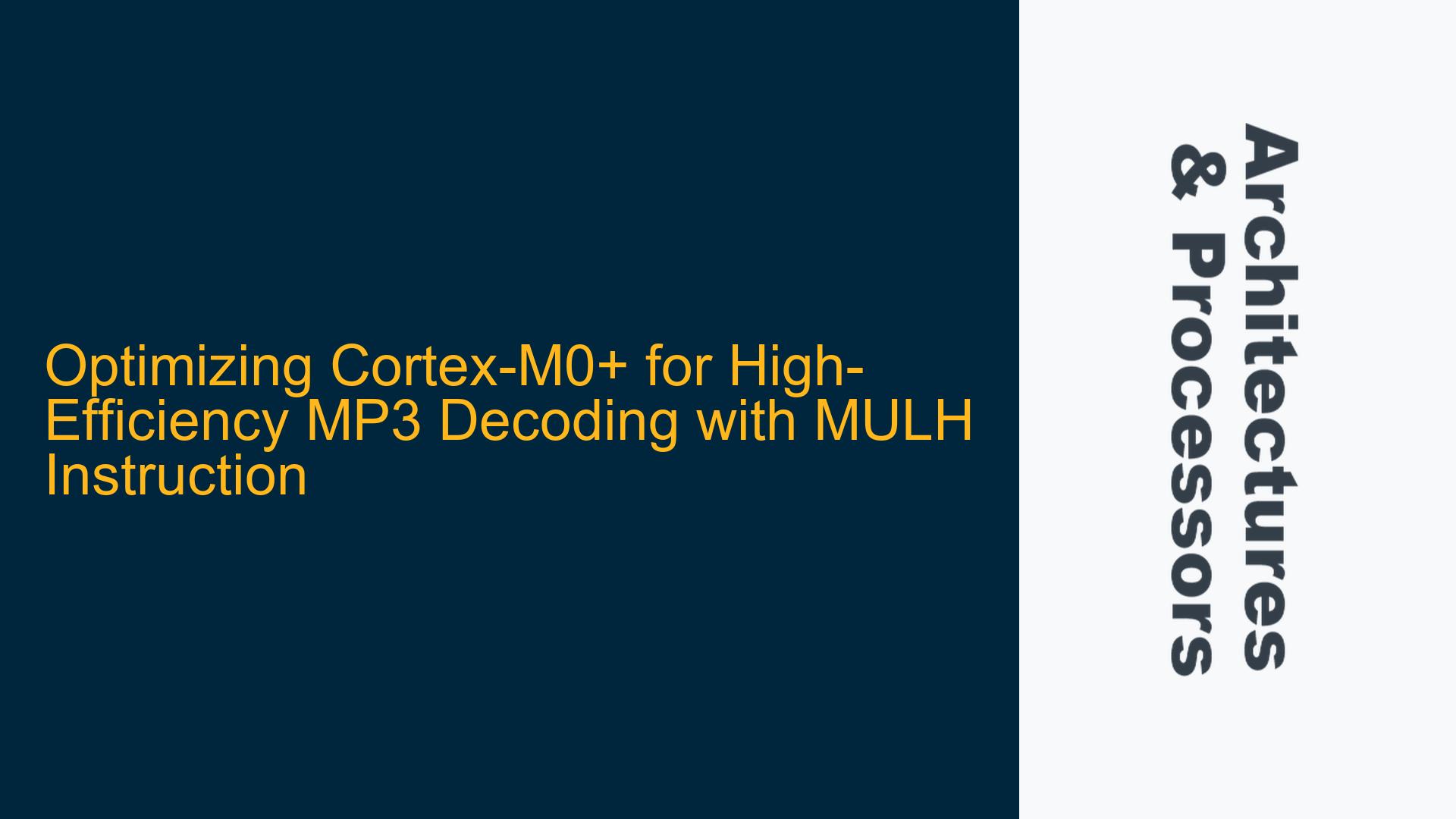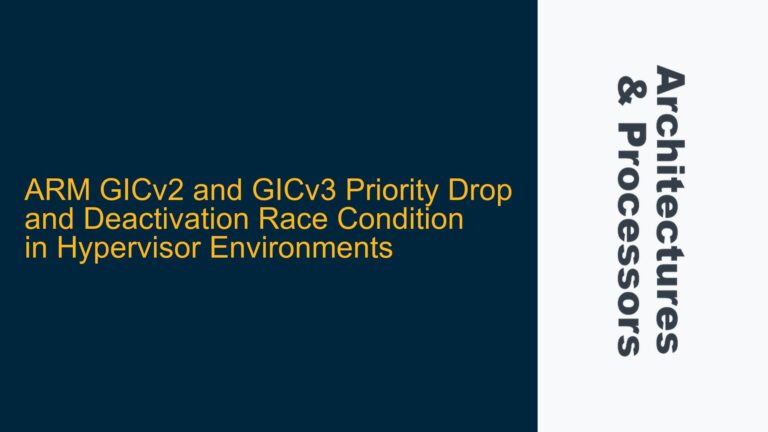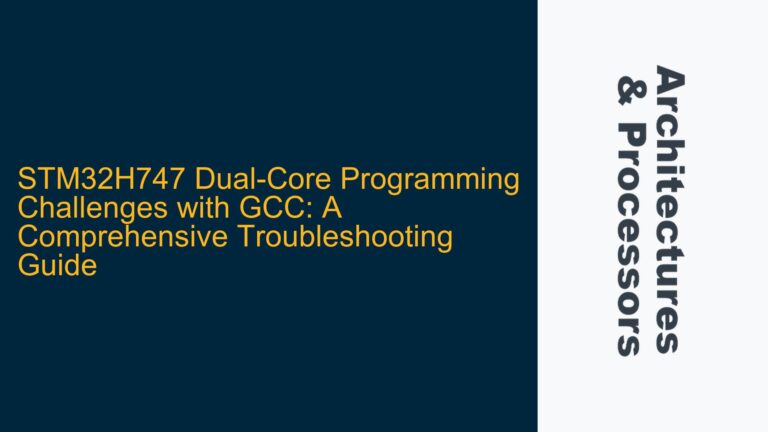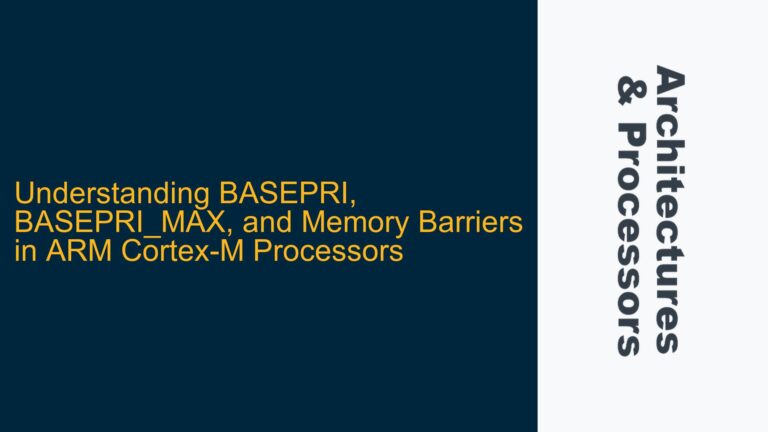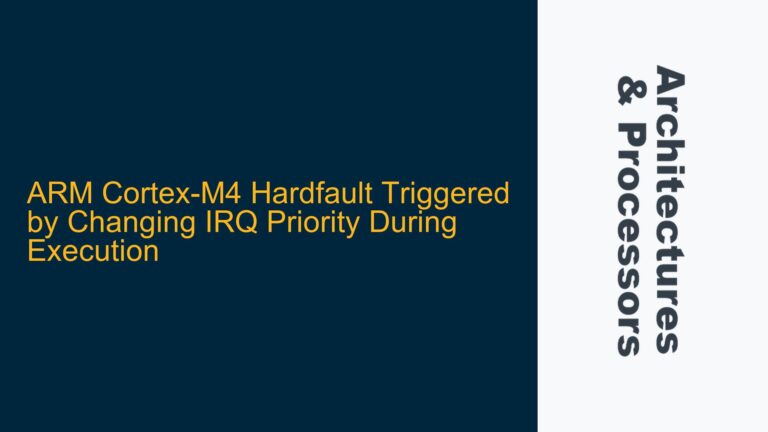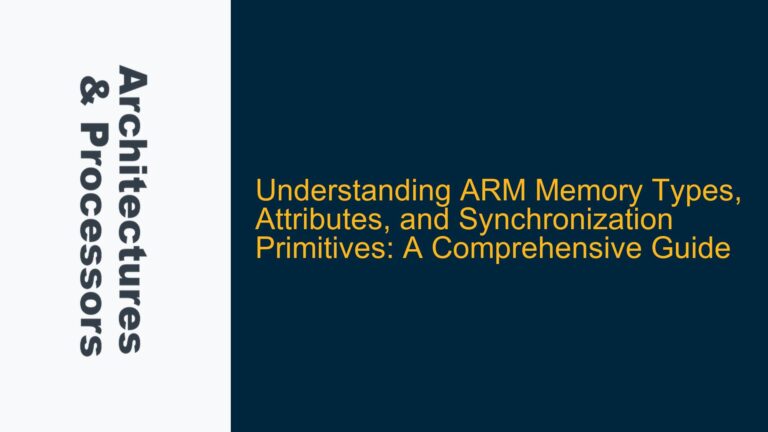Cortex-M0+ Performance Bottleneck in MP3 Decoding Due to Missing MULH Instruction
The Cortex-M0+ processor, while highly efficient and cost-effective for many embedded applications, faces a significant performance bottleneck when tasked with computationally intensive operations such as MP3 decoding. The core issue lies in the absence of a native MULH (multiply high) instruction, which is critical for efficiently performing 32-bit multiplication operations that yield a 64-bit result, specifically targeting the upper 32 bits of the product. This limitation forces developers to rely on software-based workarounds, such as the MULSHIFT32 macro, which incurs a substantial performance penalty. The MULSHIFT32 macro, while cleverly optimized, still requires 17 cycles per operation, compared to the hypothetical single-cycle execution of a dedicated MULH instruction. This inefficiency is particularly problematic in audio decoding tasks, where such operations are repeated thousands of times per second, leading to increased power consumption and reduced battery life in portable devices.
The Cortex-M0+ architecture, designed for ultra-low-power applications, lacks the DSP (Digital Signal Processing) extensions found in higher-end ARM cores like the Cortex-M3 or Cortex-M4. These extensions include instructions like SMULL (signed multiply long), which can perform 32-bit multiplications and store the full 64-bit result in two registers. The absence of such instructions in the Cortex-M0+ forces developers to either accept suboptimal performance or consider migrating to more powerful (and power-hungry) cores, which may not be feasible in cost-sensitive or power-constrained designs.
Impact of MULSHIFT32 Macro on MP3 Decoding Efficiency
The MULSHIFT32 macro, while a remarkable achievement in software optimization, highlights the limitations of the Cortex-M0+ architecture for DSP-heavy tasks. In the context of MP3 decoding, the macro is used extensively in critical functions such as the polyphase filter, inverse discrete cosine transform (IDCT), and mid-side processing. Each invocation of the macro introduces a significant overhead, as it must emulate the functionality of a MULH instruction using a sequence of simpler operations. This overhead is compounded by the fact that these functions are called repeatedly during the decoding process, leading to a cumulative performance impact.
For example, in the polyphase filter loop, the use of the MULSHIFT32 macro increases the cycle count from approximately 409-421 cycles (with a hypothetical MULH instruction) to 627 cycles. This represents a 50% increase in execution time, which directly translates to higher power consumption and reduced battery life. Similarly, functions like idct9.c and MidSideProc.c, which also rely heavily on the MULSHIFT32 macro, experience comparable performance degradation. The cumulative effect of these inefficiencies makes it challenging to achieve real-time MP3 decoding on the Cortex-M0+ without resorting to higher clock speeds, which further exacerbates power consumption issues.
Exploring Hardware and Software Solutions for MULH Functionality
Given the performance limitations imposed by the absence of a MULH instruction, developers must consider both hardware and software solutions to address this bottleneck. On the hardware side, one potential approach is to modify the Cortex-M0+ architecture to include a MULH instruction. This would require adding a small number of gates to the processor’s arithmetic logic unit (ALU) to support 64-bit multiplication and extraction of the upper 32 bits of the result. Based on estimates, this modification would increase the transistor count from approximately 12,000 to 25,000, resulting in a negligible increase in silicon area (around 0.008 mm² on a 40nm process). Despite the modest increase in hardware complexity, the performance benefits of a dedicated MULH instruction would be substantial, potentially reducing the cycle count for critical operations by a factor of 17.
On the software side, developers can explore alternative optimization techniques to minimize the performance impact of the MULSHIFT32 macro. One approach is to leverage the Cortex-M0+’s Thumb instruction set, which is designed for high code density and efficient execution. By carefully optimizing the assembly code for the MULSHIFT32 macro, it may be possible to reduce the cycle count further, although this would require significant effort and expertise. Additionally, developers can consider partitioning the MP3 decoding workload between the Cortex-M0+ and a dedicated hardware accelerator, such as a custom DSP block or an FPGA. This approach would offload the most computationally intensive tasks to the accelerator, allowing the Cortex-M0+ to focus on control and data management tasks.
Another potential solution is to migrate to a more powerful ARM core, such as the Cortex-M3 or Cortex-M4, which includes DSP extensions and native support for 64-bit multiplication. While this would eliminate the need for software-based workarounds, it would also increase the cost and power consumption of the system, which may not be acceptable in all applications. For cost-sensitive designs, developers may also consider alternative architectures, such as RISC-V, which offers a modular and extensible instruction set. By customizing the RISC-V core to include a MULH instruction, developers can achieve the desired performance without incurring the licensing costs associated with ARM cores.
In conclusion, the absence of a MULH instruction in the Cortex-M0+ architecture presents a significant challenge for developers working on computationally intensive tasks such as MP3 decoding. While software-based workarounds like the MULSHIFT32 macro provide a partial solution, they cannot fully compensate for the lack of hardware support. To achieve optimal performance and power efficiency, developers must carefully evaluate the trade-offs between hardware modifications, software optimizations, and alternative architectures. By addressing this bottleneck, it is possible to unlock the full potential of the Cortex-M0+ for a wide range of embedded applications.
